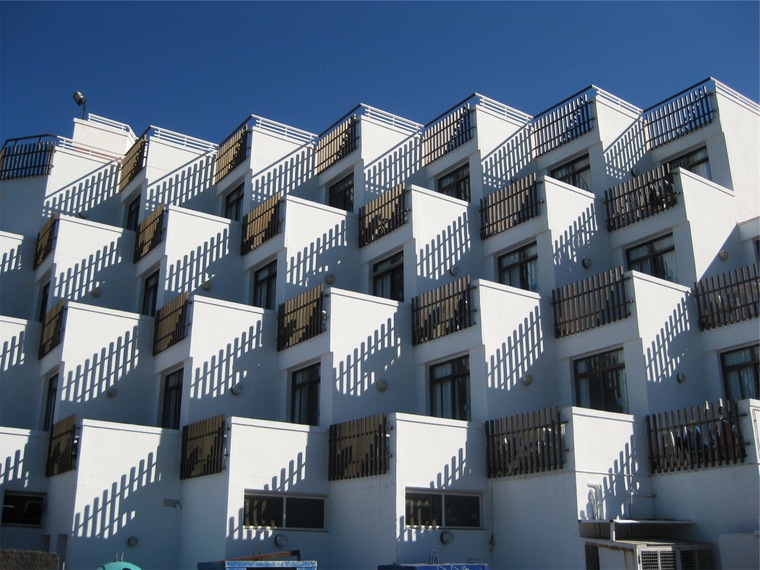Rewind seven years ago.
Daniel and I were in our early twenties and engaged to be married in a few months. I was living with my parents at the time and Daniel renting an unit in a basement. We had to decide where we to live after the wedding festivities. We thought about renting but after careful consideration, we bought a place of our own.
Our marital home was a 850 square foot condo in the north end of the city. The neighbourhood, though busy and bustling, was far from what I had wanted: the hip and urban experience of downtown. But it was still on the subway line, close to both our work, and cost much less than an unit at the city’s core.
We enjoyed the first years as newlyweds in the condo. Groceries, restaurants and movie theatres were all within walking distance. The subway was a five minute walk away and we used it on a regular basis whenever we wanted to venture further south for more culture and character. The condo itself, with two bedrooms and two bathrooms, was more than spacious for two people; we barely used the second bedroom. We made the condo home with the intention of moving to a bigger space when children entered our lives.
The American Dream: Big
North Americans like big. It is evident in food portion sizes, the vehicles on the road, and the ever so popular shopping destination, Costco. With big stuff, North Americans need space to keep their SUVs and wholesale quantities of Costco goods. The average home in the States was approximately 2,400 square feet, according to the Census Bureau. Ben Rabidoux, president of a market research firm specializing in Canadian trends, looked at house size statistics north of the border and observed the following:
The average size of a home was 1,050 square feet in 1975, but in 2010 the average home under construction was 1,950 square feet.
The American dream, apparently, is bigger space.
Related: The Cost of Housing in Toronto
Is BIG for Us?
As we neared the baby making age, many of our friends swapped condo living for more space in one of two ways:
- Buy a house in the suburbs
- Buy a house in the city for astronomical prices.
As babies came into our lives, we considered the options:
The Suburban House
We ruled out living in the suburbs rather quickly. We had grown too accustomed to the conveniences of city living. Need food? There are four grocery stores within walking distance, not to mention a butcher shop, farmer’s market, bakery, and countless of restaurants. Need entertainment? There are at least five playgrounds and a library within a 500m radius. Need to venture outside the neighbourhood? Walk to the subway. We were not willing to give all of that up.
The City House
We entertained this idea of buying a bigger place in the city. While we found a couple of houses we liked in areas we loved, there was a problem: housing in Toronto comes with a hefty price tag. During this summer, the average price for a detached home in Toronto reached $1.05 million which was an 18% increase from the previous year (2014). A bigger place would inevitably come with a much bigger mortgage.
Did we want to be house rich and cash poor? No, we like having liquid assets on hand and the financial flexibility from a smaller mortgage.
Space? Who Needs It?!
We were not willing to move to the suburbs or take on a much bigger mortgage- what did that leave us?
Embrace small space living.
We like having liquid assets on hand and the financial flexibility from a smaller mortgage.
The Center on Everyday Lives of Families at the University of California conducted a study of contemporary middle-class American families, observing 35 families over a period of four years. It was found that regardless of the size of house, families spent most of their waking hours in a small space, primarily the kitchen, family room and dining room. While people yearned for space and even had an abundance of it, it wasn’t always used.
My own childhood experience echoes the same observation. I lived in the suburbs in a house that was over 2300 sq feet. There were four bedrooms, one for my parents and each child of theirs. There was also a big lawn and backyard, a giant unfinished basement and a two car garage. During waking hours, my family congregated mainly in two rooms of our home: the kitchen and my parent’s bedroom. In comparison, the rest of the house was rarely used.
The Last Word
Choosing a home or where to raise a family is a difficult decision. It is critical to not let societal norms dictate where you should live; just because the Jones have a lovely house with a lawn doesn’t necessary mean it is the best option. Evaluate your own set of financial circumstances and make decisions based what you value. We fully intended to move to a bigger home when we started having kids, but at the arrival of our first and then our second, we decided it wasn’t space that we wanted but financial flexibility and conveniences of city living. Now, our family of four live in that very first home Daniel and I bought in the city. We use every room.
What rooms in your house do you use most?




